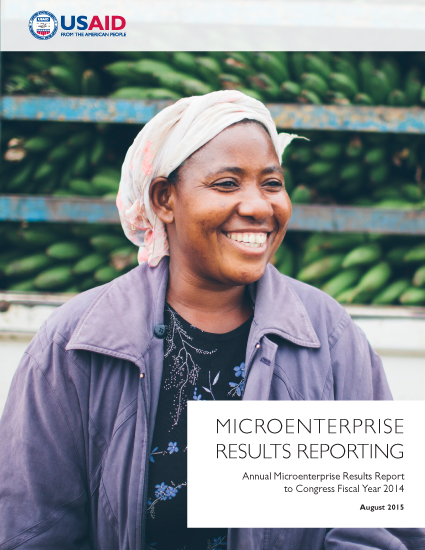Speeches Shim
I am pleased to share with you USAID’s FY 2014 Microenterprise Results Reporting. As the global community establishes a new set of sustainable development goals, there is keen recognition that inclusive economic growth is essential to reducing extreme poverty. Microenterprise development plays an important role in USAID efforts to accelerate growth that engages and benefits all of society--regardless of economic class, gender, sex, disability or religion.
Over the course of more than 30 years USAID’s microenterprise efforts have evolved from a focus on microfinance to the provision of a much broader array of interventions aimed at expanding access not only to finance, but also to markets, services and other resources for poor and marginalized populations. As highlighted in this year’s report, USAID puts this into practice through a wide range of activities in a number of sectors.
As a result of USAID support, smallholder farmers growing avocados in Tanzania, where two-thirds of the population lives on less than $1.25 a day, now have greater access to planting materials, post-harvest services and other types of support needed to connect to global markets and increase incomes. In Haiti, residents of poor neighborhoods in Port-au-Prince, that are often subject to high crime, are now able to save money and transfer funds without worrying about theft due to USAID support for the use of mobile wallets in a Village Savings and Loan Association program. And in Kenya, as a result of a Development Credit Authority guarantee, the Kenya Women Finance Trust has provided more than 20,000 micro-loans to women entrepreneurs to support their agricultural and clean energy ventures.
Moving forward, USAID will further the integration of microenterprise development into other sector programs, and pursue a multi-pronged approach to strengthen the environment for microenterprise development. This new approach will focus on mobilizing private sector capital, engaging a wider set of institutions in providing financial services and products, and using digital technologies, such as mobile banking, to lower costs and reach women and remote populations.
In all these efforts, we will embrace local leadership, private investment, innovation and partnerships, while relentlessly focusing on achieving results that will contribute to our global commitment to eradicate extreme poverty by 2030.


Comment
Make a general inquiry or suggest an improvement.